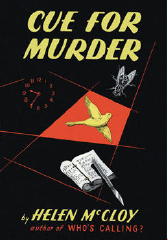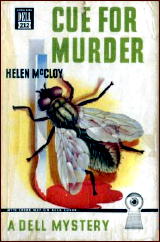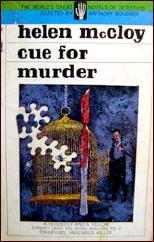REVIEWED BY MICHAEL SHONK:

MATT HELM. ABC-TV. Made-for-TV Movie: 7 May 1975. TV series: 20 September 1975 to 3 January 1976. Meadway Production in association with Columbia Pictures Television. Cast: Tony Franciosa as Matt Helm, Laraine Stephens as Claire Kronski, and Gene Evans as Sergeant Hanrahan. Based on characters created by Donald Hamilton. Developed for television by Sam Rolfe. Produced by Charles B. Fitzsimons and Ken Pettus. Executive Story Consultant: James Schmerer. Executive Consultant: Irving Allen.
As with many fictional characters, Matt Helm has an identity crisis when it comes to his life in books, films and television. Matt Helm has always adapted to what was popular at the time. The character created by Donald Hamilton for a series of books, starting with Death of a Citizen in 1960, was a government assassin fighting the Cold War during a time when such a paperback series character was popular.
The movie Helm was one of the endless numbers of James Bond parodies popular in films during the 60s and 70s. And the TV version joined the large group of ex-something (be it ex-con, ex-cop, or in Helm’s case ex-spy) turned 70’s PI with a fast car. Matt Helm liked to join the crowd.

The TV movie version of Helm developed by Sam Rolfe was an ex-spy turned PI with a beautiful lover, a liberated lawyer who didn’t mind supplying the cheesecake. This Helm had a dark side, while he still was able to contact The Director and his old agency The Machine, Helm had quit the spy business after tiring of all the lies and bad things he had to do. While reformed and sanitized for 70s TV, this Helm was closer to Hamilton’s version than the movie version ever got.
Sadly the TV version had something in common with the film version: both were made by Columbia Pictures and producer Irving Allen. What saved the TV Movie was the talent of writer Sam Rolfe who had created or developed such TV series as Have Gun, Will Travel, Man from U.N.C.L.E., and Delphi Bureau. His screenplay (with Harold Jack Bloom) for The Naked Spur (1953) received an Oscar nomination.

Yes, it is a 1970s TV Movie, so there were cheesy moments and it was not quality drama, but it was and still remains a mindlessly fun entertaining TV mystery thriller. Rolfe’s script featured a strong plot and enough twists to keep the viewer involved. Rolfe, one of the best TV Movie pilot writers of the time, was also able to make Helm interesting, and the film had enough possible story directions to inspire several seasons of story lines. It would be something the weekly series would not take advantage of.
The rest of the production was above average for the standard 70s TV Movie, thanks in large part to the work of Producer-Director Buzz Kulik. Tony Franciosa played his usual character, the same guy he played in Name of the Game, Search, and every other character he played on television. Laraine Stephens (Mrs. David Gerber. Gerber was an award winning producer (Police Story) and at the time head of Columbia Pictures Television) was fine as liberated and sexually active Claire Kronski. The only other character from the pilot to make it to the series was Helm’s police contact and friend Sergeant Hanrahan played by the capable Gene Evans.
MATT HELM. 7 May 1975. Written by Sam Rolfe. Executive Producer: Irving Allen. Produced and Directed by Buzz Kulik. Guest Cast: John Vernon, Ann Turkel, Patrick Macnee, Michael C. Gwynne. *** When a PI she hired is killed Maggie turns to Matt for help to find her father’s killer.
https://www.youtube.com/watch?v=eN91OAvpuXY
Maggie’s father had been killed when she was very young. Now a successful actress Maggie can afford to hire someone to find her father’s killer. She and Matt meet through Kronski who is the actress’ lawyer. When Matt learns a casual friend and fellow PI had been killed he takes the case.
Maggie’s father had been a Captain in the Army who was murdered by his Sergeant when he uncovered the Sergeant’s smuggling ring. The killer vanished. The murdered PI thought he had found the killer, now known as Harry Paine. Matt remembers Harry from his days with The Machine. It is not a happy memory. As Matt searches for Maggie’s father killer, everyone including an old friend from The Machine warn Matt to drop the case.

As with most TV shows there were changes made from the TV Movie pilot to the weekly series. Jerry Fielding’s theme from the TV Movie was replaced by a theme written by Morton Stevens. The series added a new character to the supporting cast, Ethel (Jeff Donnell), an annoying woman who took Matt’s messages. On the plus side the one bad subplot from the TV Movie featuring the angry PI hating Police Sergeant (Val Bisoglio) was dropped.
Irving Allen remained, now credited as executive consultant (there was no on air credit for executive producer). Buzz Kulik and Sam Rolfe were gone. Charles B. Fitzsimons and Ken Pettus became the producers. James Schmerer, who had been the associate producer for the film The Silencers (1966), was the series executive story consultant.
The dark ex-spy side of Helm was basically gone. The character now was just another TV PI, closer to being Tony Franciosa than any version of Helm. The stories were inferior PI procedurals with enough plot holes to turn the cheese to Swiss, bad acting doomed by cardboard characters, directors missing shots, and enough padding to fill a mattress warehouse.
“Now I Lay Me Down To Die.” 27 September 1975. Written by Gerry Day and Bethel Leslie. Directed by Earl Bellamy. Guest Cast: Shelley Fabares, Burr DeBenning, Ian McShane. *** Rich woman known for her charity work hires Matt to find a serial killer whose last victim was her surrogate father.
https://www.youtube.com/watch?v=Za_6l26H-N8
This is a cheese fest even Wisconsin would wince at. So lets play 70’s TV PI Cliché Bingo!
It featured a serial killer. The Killer was female. She was nuts. She had duel personalities. Chris the good girl was rich and spent her time working for charities. Tina the bad girl was a hooker. She killed her johns after sex. She loved her work.
The audience knows who the killer is before any of the characters including Chris. There is a gratuitous subplot about Chris’s evil husband. He is in debt. He is going to steal her fortune. She won’t get the money from dead Daddy’s will until next week. This subplot will be ignored at the end.

There is more? Yep, Matt had barely started when someone (we never are really sure who or why) tries to kill him. Car Chase!! Matt tracks down Tina and gets knocked out from behind. Talking head scene where an expert refuses to answer questions while answering questions to explain killer’s actions.
Female expert flirts with Matt. Police know where possible clue is but can’t get search warrant. Licensed PI ignoring rule of law plans illegal search believing a court of law would not toss out such evidence. Chris confesses before talking to her lawyer a few feet away. Ending ties things up in neat little bow as if victims were mere plot devices. BINGO! Extra point – famous ex-teen queen plays World’s most overdressed psycho killer hooker!
The series faced even more challenges than bad writing and acting. ABC put it in a suicidal time slot, Saturday at 10pm-11pm, opposite of two popular series, CBS’s Carol Burnett Show and NBC’s Saturday Night at the Movies. And there may have been behind the scenes problems with Tony Franciosa’s temper.

According to gossip columnist Maggie Daly (Chicago Tribune, 30 October 1975), while on location at the Burbank Water and Power plant Franciosa and director Richard Benedict (an ex-fighter) got into a physical fight that didn’t stop until the two fighters and the entire cast and crew were tossed off the location.
Not surprisingly, Matt Helm lasted only thirteen episodes. The final episode to air “Die Once, Die Twice†(January 3, 1976) began with Matt happily leaving on a spy adventure for The Machine. Sadly, the mission was kept secret from us, and instead we got a 70s cheesy lawyer show featuring Kronski.
I certainly recommend the TV Movie. But while I am curious what TV series Matt Helm might have inflicted on the spy genre, after watching four episodes of this series and its attempts at the PI and lawyer genre I rejoice ABC put TV series Matt Helm out of my misery.
SOURCE:
And thanks to the always informative Thrilling Detective website for filling in my gaps of knowledge about the book series by Donald Hamilton.


